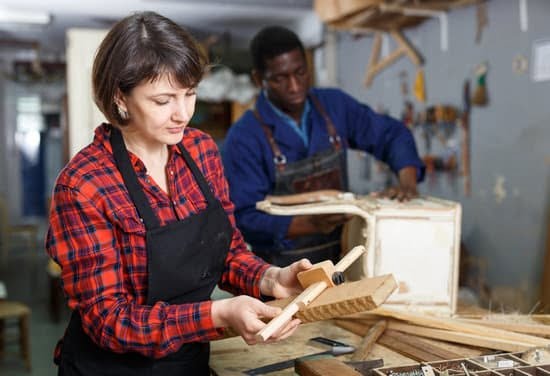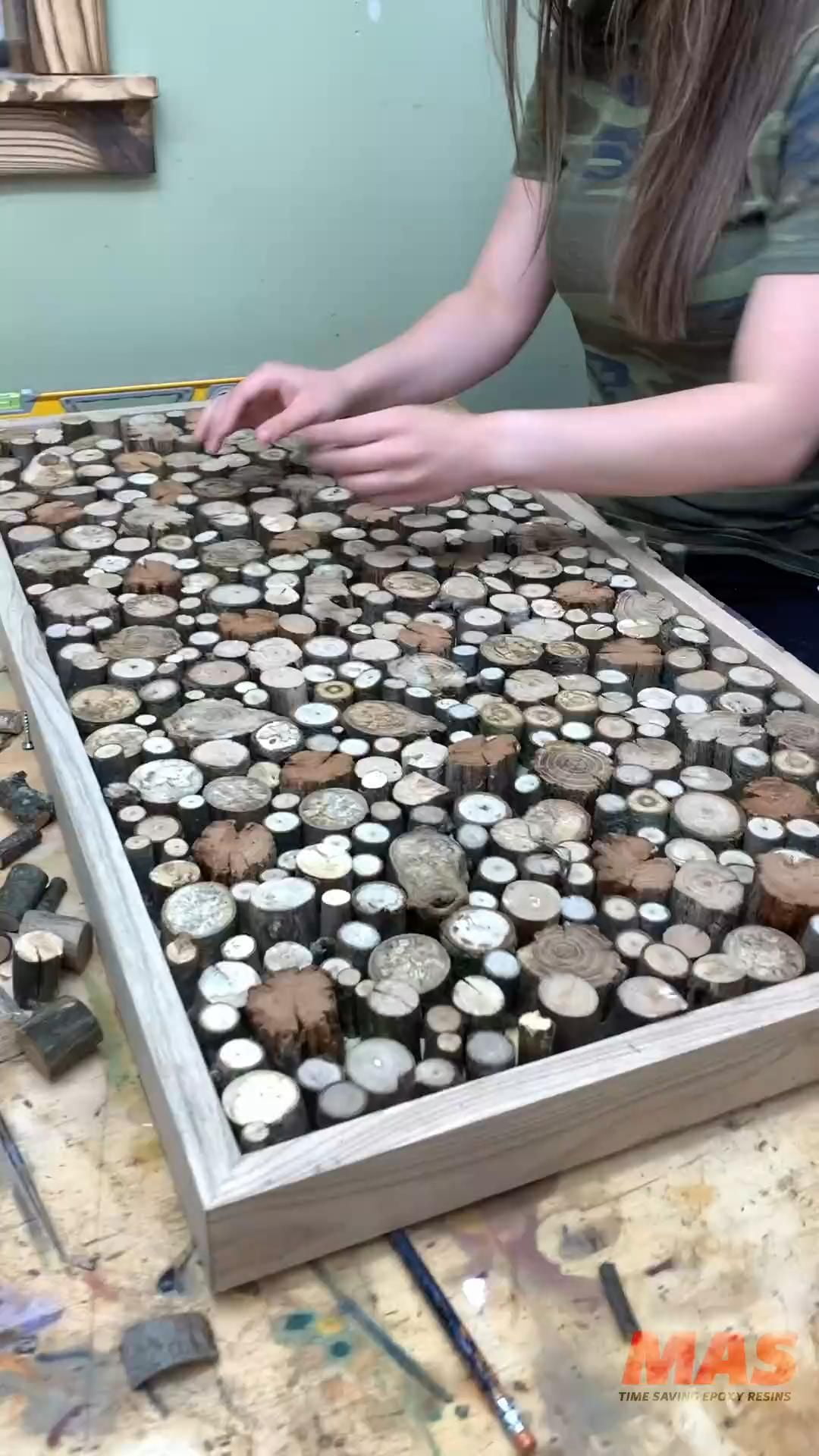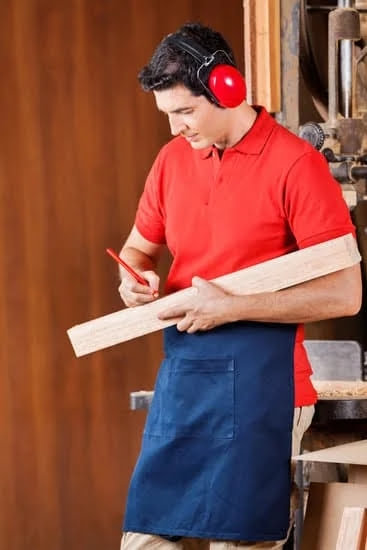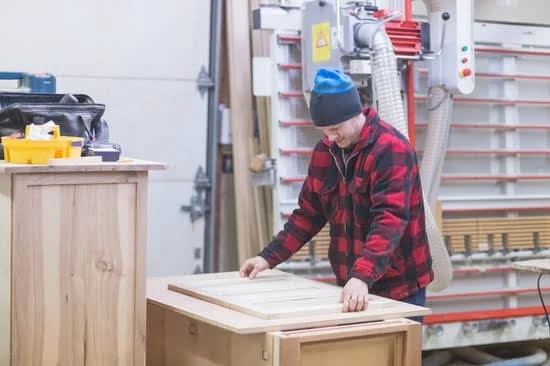Woodworking is a versatile and rewarding skill that every DIY enthusiast should have in their repertoire. Whether you’re tackling home improvement projects or creating handmade furniture, basic woodworking skills are essential. In this article, we will explore why basic woodworking is a must-have skill for DIY enthusiasts.
We’ll delve into the importance of these skills in saving money and providing a sense of accomplishment. So grab your tools and let’s get started on your journey to becoming a skilled woodworker.
When it comes to DIY projects, having basic woodworking skills can significantly enhance your abilities and decrease your reliance on outside help. From building shelves and tables to constructing decks and cabinets, understanding the fundamentals of working with wood allows you to bring your visions to life.
By mastering basic woodworking techniques, you can save money by avoiding costly hired labor for simple projects around the house. Moreover, being able to complete these tasks yourself will give you a sense of accomplishment and pride in your handiwork.
To dive into the world of woodworking, it’s crucial to have the right set of tools. In the next section, we will provide a comprehensive list of essential woodworking tools along with their purposes. Don’t worry if you’re on a budget or just starting out – we’ll also offer budget-friendly options for beginners. With these tools at your disposal, you’ll be well-equipped to take on various woodworking projects with confidence.
Safety should always be prioritized when working with wood and power tools. The purpose of this article is not only to teach you essential woodworking techniques but also to ensure that you practice them safely. In our discussion about safety measures in basic woodworking, we will emphasize the importance of wearing protective gear and explain how to handle power tools responsibly. Additionally, we’ll provide tips for avoiding common injuries that may occur during woodworking projects.
Basic Woodworking offers an exciting opportunity for DIY enthusiasts to learn a valuable skill while unleashing their creativity through practical applications. It’s time to roll up your sleeves and explore the world of woodworking.
By the end of this article, you will have gained a deeper understanding of basic woodworking skills, received practical tips and guidance, and be ready to take on your first woodworking project. So let’s delve into the essential tools, safety measures, wood types, techniques, and more to get you started on your woodworking journey.
Essential Tools for Basic Woodworking
Basic woodworking requires a set of essential tools to successfully complete projects. Whether you are a beginner or more experienced, having the right tools is crucial for achieving quality results. Here is a comprehensive list of essential woodworking tools that every DIY enthusiast should have:
- Tape Measure: A tape measure is used to take accurate measurements and ensure that pieces are cut to the correct length.
- Circular Saw: This handheld power tool is versatile and can make straight cuts through various types of wood.
- Jigsaw: The jigsaw is perfect for making curved cuts, intricate designs, or cutting out shapes in wood.
- Chisels: Chisels are essential for shaping wood and creating precise, clean cuts.
- Miter Saw: This saw is designed specifically for making angled cuts, such as miter or bevel cuts.
- Woodworking Clamps: Clamps hold pieces of wood in place while glue dries or when securing joints during assembly.
- Power Drill: A power drill makes drilling holes and driving screws much faster and easier than using manual tools.
- Router: Routers are used to hollow out an area in wood, create decorative edges, or carve intricate patterns.
- Handplane: Handplanes are used to smooth surfaces, remove imperfections, or shape small pieces of wood.
- Sandpaper and Sanding Block: These are used for sanding down rough edges or surfaces to achieve a smooth finish.
While it can be tempting to invest in high-end tools right away, there are budget-friendly options available for beginners who may not want to spend too much initially. Many hardware stores offer affordable tool sets or starter kits that include the basic woodworking essentials listed above at a reasonable price.
Using quality tools can make a significant difference in your woodworking experience and the final outcome of your projects. It’s important to properly maintain your tools by cleaning and storing them appropriately after each use so that they last longer and continue to perform well.
| Tool | Purpose |
|---|---|
| Tape Measure | To take accurate measurements. |
| Circular Saw | To make straight cuts through various types of wood. |
Safety Measures in Basic Woodworking
Woodworking is a rewarding and fulfilling hobby, but it is important to prioritize safety when working with tools and materials. Whether you are a beginner or an experienced woodworker, following proper safety measures can prevent accidents and injuries. This section will highlight the importance of wearing protective gear, safe handling of power tools, and tips for avoiding common woodworking injuries.
Protective gear is essential in any woodworking project. Wearing safety glasses or goggles can prevent eye injuries from flying wood chips or debris. Additionally, ear protection such as earmuffs or earplugs should be worn to protect against the loud noise generated by power tools. A dust mask is also recommended to prevent the inhalation of sawdust and other airborne particles.
Safe handling of power tools is crucial to avoid accidents. It is important to familiarize yourself with each tool’s user manual and instructions before use. Always ensure that the tools are in good working condition, with no loose parts or damaged cords. When operating a power tool, maintain a firm grip and keep your hands away from the cutting area. Never remove safety guards or alter the equipment in any way.
In addition to protective gear and safe handling practices, there are several tips for avoiding common woodworking injuries. One key tip is maintaining a clean workspace free from clutter, as tripping over objects can lead to falls or other accidents.
It is also important to use sharp blades and bits to reduce the risk of kickbacks or mishaps caused by dull tools. Lastly, always work at a comfortable pace without rushing through tasks, as this can increase the likelihood of mistakes or accidents.
By prioritizing safety measures in basic woodworking, you can enjoy your projects with peace of mind while reducing the risk of injuries. Remember to wear appropriate protective gear, handle power tools safely, and follow best practices for accident prevention. By doing so, you can fully embrace the world of basic woodworking and unleash your creativity.
| Safety Measures in Basic Woodworking |
|---|
| Wear protective gear such as safety glasses, ear protection, and dust masks |
| Familiarize yourself with user manuals and instructions for all power tools |
| Maintain a clean and clutter-free workspace to avoid accidents |
| Use sharp tools to reduce the risk of mishaps caused by dull blades or bits |
| Work at a comfortable pace without rushing through tasks to prevent mistakes or accidents |
Understanding Different Types of Wood
When it comes to basic woodworking, one of the most important aspects to consider is the type of wood you use for your projects. Each type of wood has its own unique characteristics and qualities that can greatly impact the final outcome and longevity of your creations. In this section, we will provide an overview of the most commonly used types of wood for basic woodworking, discuss their characteristics, and offer tips for choosing the right wood for your project.
Overview of Commonly Used Types of Wood
There are numerous types of wood available for woodworking, but some are more commonly used than others due to their availability, durability, and versatility. Here are a few popular options:
- Pine: Pine is a softwood that is widely available and relatively affordable. It is easy to work with and has a light color that can be easily stained or painted. However, it may dent or scratch more easily compared to hardwoods.
- Oak: Oak is a popular choice for furniture making due to its durability and strength. It has a distinct grain pattern and can range from light brown to reddish-brown in color.
- Maple: Maple is a hard and dense hardwood known for its light color and smooth texture. It has minimal grain patterns, making it ideal for projects where you want a clean and uniform appearance.
- Cherry: Cherry wood is sought after for its rich reddish-brown color that deepens over time with exposure to sunlight. It has a fine grain pattern and works well in both furniture-making and decorative projects.
Choosing the Right Wood for Your Project
When selecting the type of wood for your project, there are several factors to consider:
- Purpose: Consider what the finished project will be used for. Does it need to be strong and durable? Or is it purely decorative?
- Appearance: Think about the aesthetic you want to achieve. Do you prefer a wood with prominent grain patterns, or do you want a smoother and more uniform look?
- Budget: Different types of wood vary in price, so it’s important to consider your budget when choosing the right wood for your project.
- Availability: Some types of wood may be easier to find than others depending on your location. Consider what is readily available to you locally or online.
By understanding the different types of wood available and their characteristics, you can make informed decisions when selecting the right wood for your basic woodworking projects. Remember that experimenting with different woods can also add creativity and uniqueness to your creations. With this knowledge, let’s proceed to the next section where we will explore basic woodworking techniques that will help bring your projects to life.
Basic Woodworking Techniques
Woodworking is a skill that requires certain techniques to ensure successful and high-quality results. Whether you are a beginner or have some experience, mastering the basic woodworking techniques is essential. This section will introduce you to these fundamental techniques, provide step-by-step guides on how to execute them, and give you practical examples and projects to practice on.
Measuring and Marking
Accurate measurements are crucial in woodworking projects. Measuring and marking is the first step in any project and lays the foundation for the rest of the process. To achieve precise measurements, it’s important to use a combination square, tape measure, and marking gauge. This sub-section will guide you through the steps of measuring correctly and making accurate marks on your wood.
Cutting
Cutting wood is one of the most common tasks in woodworking. There are various methods for cutting wood depending on the desired shape and size. The two primary tools used for cutting are a handsaw for manual cuts and a power saw for larger or more complex cuts. This sub-section will cover how to make straight cuts, curved cuts, bevel cuts, as well as tips for cutting with different types of saws.
Joinery
Joinery involves connecting two or more pieces of wood together to create a strong bond. There are many types of joints used in woodworking, including butt joints, miter joints, dovetail joints, and biscuit joints. Each joint has its own strength and application depending on the project requirements. In this sub-section, we will walk you through each type of joint, explain when to use them, and provide detailed instructions on how to create them properly.
By mastering these basic woodworking techniques, you will gain confidence in your abilities as well as increase your chances of successful completion of any woodworking project. Remember that practice makes perfect, so start with small projects to practice and hone your skills.
With time, patience, and dedication, you’ll be able to expand your woodworking knowledge and take on more complex projects. So grab your tools, put on your safety gear, and let’s dive into the fascinating world of woodworking.
Building Your First Woodworking Project
Once you have familiarized yourself with essential woodworking tools, safety measures, and different types of wood, it’s time to put your skills to use by building your first woodworking project. This section will guide you through the process of selecting a beginner-friendly project, providing detailed instructions for building it, and offering tips and tricks for successful completion.
When choosing your first woodworking project, it’s important to start with something that matches your skill level and is not too complex. Consider projects that require basic woodworking techniques such as measuring, cutting, joining pieces together, and sanding. Examples of beginner-friendly projects include a simple wooden shelf, a small storage box, or a picture frame.
Once you have selected your project, gather all the necessary materials and tools before starting. Carefully follow the step-by-step instructions provided in the project plan or design. These instructions will guide you through each stage of the construction process, including measuring and marking the wood pieces, cutting them to size using appropriate tools like a saw or chisel, joining the pieces together using techniques like gluing or nailing, and finally sanding the surface for a smooth finish.
Throughout the construction process of your first woodworking project, it is natural to encounter challenges or make mistakes. Don’t get discouraged. Mistakes are part of learning and improving one’s skills. If you find yourself stuck or unsure about how to proceed at any point during the project, consult online resources or seek advice from experienced woodworkers in dedicated forums or communities.
Remember that building your first woodworking project is not just about the end result; it is also an opportunity to enjoy the journey and unleash your creativity. Take pride in each step you complete and learn from any mistakes along the way. As you continue practicing and gain more experience in basic woodworking techniques, you will be able to tackle more challenging projects and create beautiful handcrafted items that showcase your skills and reflect your unique style.
Fixing Common Woodworking Mistakes
Woodworking, like any skill, takes time and practice to master. Even the most experienced woodworkers make mistakes from time to time. Fortunately, most woodworking mistakes can be fixed with a little know-how and determination. In this section, we will provide a guide to troubleshooting common woodworking mistakes and offer expert tips for salvaging a project gone wrong.
One of the most common mistakes in woodworking is making uneven cuts. This can happen due to a variety of factors such as inaccurate measuring or improper handling of tools. To fix uneven cuts, start by identifying the problem areas. Use a straightedge or level to determine where the cuts are not aligned properly. Then, carefully trim away excess wood using a saw or plane until the edges are even.
Another frequent issue in woodworking is gaps between joints or seams. These gaps can be unsightly and compromise the structural integrity of your project. To fix gaps, you will need some wood filler or putty that matches the color of your project’s wood. Apply a small amount of filler into the gap using a putty knife, spreading it evenly until the gap is filled completely. Allow it to dry according to the manufacturer’s instructions before sanding it smooth.
Splintering is yet another common woodworking mistake that can happen when cutting or sanding wood too aggressively or using dull tools. To fix splintered wood, start by gently removing any loose splinters around the affected area using sandpaper or a chisel. Fill any remaining rough spots with wood filler and let it dry before sanding smooth. For larger splintered areas, you may need to use glue and clamps to rejoin separated pieces of wood.
Remember that prevention is always better than fixing mistakes after they occur. Take your time during each step of the woodworking process and double-check your measurements before making any cuts. Use sharp tools suited for the task at hand and follow best practices for tool usage and safety precautions.
By being patient and willing to learn from your mistakes, you can salvage a project that has gone wrong and turn it into a successful woodworking endeavor. With practice, you will gain the skills and confidence needed to tackle more complex projects in the future. So don’t be discouraged by mishaps along the way – they are all part of the learning process in woodworking.
Basic Wood Finishing Techniques
Wood finishing is a crucial step in any woodworking project as it not only enhances the appearance of the wood but also protects it from damage and wear. In this section, we will explore some basic wood finishing techniques that beginners can easily learn and master.
Introduction to Different Wood Finishing Techniques
There are various wood finishing techniques available, each with its own unique characteristics and application methods. Here are some of the most common techniques:
- Staining: Stains are used to add color to bare or sanded wood. They penetrate into the pores of the wood, highlighting its natural grain patterns. Stains come in different shades and can be oil-based, water-based, or gel stains.
- Sealing: Sealing involves applying a sealant or conditioner to prepare the wood for further finishing. It helps prevent uneven absorption of wood stains or finishes and improves overall finish quality.
- Varnishing: Varnishes provide a durable protective coat on wooden surfaces. They create a glossy finish and can be clear or tinted. Varnishes are available in different formulations such as polyurethane varnish, spar varnish (for outdoor use), and shellac varnish.
- Lacquering: Lacquers offer a beautiful high-gloss finish and dry quickly. They are available in spray form or liquid form that can be applied with brushes.
Choosing the Right Finish for Your Project
The choice of finish depends on various factors such as the type of wood, intended use of the finished piece, personal preference, and desired appearance. Some finishes are better suited for indoor furniture while others are more suitable for outdoor projects.
- If you want to maintain the natural look of the wood, a clear or lightly tinted finish such as a natural oil finish or a clear polyurethane varnish would be a good choice.
- For pieces that will be exposed to water or extreme weather conditions, like outdoor furniture, it is advisable to use finishes with more protection, such as spar varnish or marine-grade polyurethane.
- If you prefer a hand-rubbed appearance and feel, you can consider using wax finishes. These finishes provide a soft sheen and can be easily reapplied if needed.
Step-by-Step Instructions for Applying Finishes
Before applying any finish, make sure the wood surface is clean, smooth, and free of dust. Here’s a basic step-by-step guide on applying wood finishes:
- Sand the wood: Start by sanding the wood surface using progressively finer grits of sandpaper until you achieve the desired smoothness.
- Apply stain (optional): If you want to add color to your project, apply wood stain following the manufacturer’s instructions. Make sure to wipe off any excess stain after application.
- Apply sealant (optional): If you are using stain or plan to apply multiple layers of finish, it is recommended to apply a sealant or conditioner before proceeding further. This will ensure an even and consistent absorption of subsequent coats.
- Apply varnish/lacquer: Using a brush or sprayer, apply thin coats of varnish or lacquer in the direction of the wood grain. Allow each coat to dry completely before applying the next one. Sand lightly between coats for better adhesion.
- Final touches: Once all coats have dried thoroughly, gently sand the final layer with fine-grit sandpaper to achieve smoothness. Wipe off any dust or debris, and apply a final coat if desired.
With these basic wood finishing techniques, you can transform your woodworking projects into stunning pieces of craftsmanship. Remember to experiment and practice on scrap wood before applying finishes to your actual projects, as this will help you gain confidence and improve your skills.
Conclusion
In conclusion, basic woodworking is an essential skill for DIY enthusiasts and offers numerous benefits. Not only does it provide a sense of accomplishment and the ability to save money by completing projects on your own, but it also allows you to unleash your creativity and bring your ideas to life. By learning basic woodworking techniques and understanding different types of wood, you can confidently take on projects and create custom pieces that fit your style and needs.
It is important to remember that safety should always be a priority in woodworking. Wearing protective gear and following proper handling procedures for power tools can prevent accidents or injuries. By taking the time to learn about safety measures and incorporating them into your woodworking practice, you can ensure a safe and enjoyable experience.
For those new to woodworking, it is recommended to start with beginner-friendly projects and gradually work your way up to more complex ones. Building your first project will not only give you hands-on experience but also boost your confidence as you see the results of your hard work.
Remember that mistakes happen, but they can often be fixed with some troubleshooting techniques. Don’t be discouraged if things don’t go according to plan – embrace the challenge and use it as an opportunity to learn from your mistakes.
To continue expanding your knowledge and improving your woodworking skills, there are plenty of resources available for further learning and community support. Online tutorials, books, workshops, and forums can provide valuable guidance and inspiration. Don’t hesitate to reach out to other woodworkers for advice or join local woodworking clubs where you can connect with like-minded individuals who share your passion.
By embracing the world of basic woodworking, you open doors to countless possibilities for creativity and self-expression. So start practicing today, explore new techniques, experiment with different types of wood, and soon you’ll find yourself making furniture, décor pieces, or even gifts for friends and family. With dedication and determination, the world of basic woodworking awaits you as a fulfilling hobby or even a potential career.
Frequently Asked Questions
What do I need for beginner woodworking?
For beginner woodworking, there are a few essential tools and materials that you will need. Firstly, a good set of hand tools such as chisels, saws (both crosscut and rip), a mallet, and a block plane are necessary for shaping and cutting wood. Additionally, power tools like a drill and a jigsaw can greatly enhance your capabilities.
When it comes to materials, having an assortment of different types of wood is important for practice and projects. Some common options include pine, oak, walnut, and birch. It’s also beneficial to have measuring tools like a tape measure or ruler, as well as safety equipment such as goggles and ear protection.
What are the basic woodworking skills?
Basic woodworking skills encompass several fundamental techniques required to work with wood effectively. One important skill is understanding how to make accurate measurements and mark cuts on the wood. This involves using rulers or measuring tapes accurately to ensure precision in your work.
Another essential skill is knowing how to properly handle hand tools such as chisels or planes to shape the wood according to your design. Mastery of basic joinery techniques is also crucial; this entails methods like gluing joints together or using nails or screws for more secure connections. Lastly, having knowledge of sanding techniques helps achieve smooth finishes on your woodworking projects.
What is basic woodworking?
Basic woodworking refers to the foundational principles and techniques involved in working with wood to create functional or decorative items. It typically involves utilizing hand tools or power tools to shape wood pieces into desired forms or sizes by removing excess material through cutting or carving processes. This can involve crafting intricate designs or simple shapes depending on the project at hand.
Joinery techniques play an integral role in basic woodworking since they determine the strength and stability of your creations by securely connecting different pieces of wood together. A combination of accuracy in measurements, skillful use of tools, knowledge of various joinery methods, and attention to detail are key aspects when practicing basic woodworking.

Hi everyone! I’m a woodworker and blogger, and this is my woodworking blog. In my blog, I share tips and tricks for woodworkers of all skill levels, as well as project ideas that you can try yourself.





